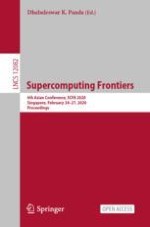1 Introduction
2 Numerical Setup
2.1 Aerodynamic Solver
2.2 Force Calculations
2.3 Solver Validation
2.4 Acoustic Solver
2.5 Simulation Setup and Grid Convergence Study
Avg thrust/g | Experiment | dx = 0.024 | dx = 0.018 | dx = 0.012 |
87.5 | 75.2 | 82.1 | 89.1 |
Control surface | Observer position | OASPL (dBA) | ||
|---|---|---|---|---|
A (0.024) | B (0.018) | C (0.012) | ||
CS_0 | 00 | 67.68 | 65.85 | 66.51 |
30 | 67.85 | 66.44 | 66.54 | |
45 | 68.26 | 66.07 | 66.74 | |
60 | 68.15 | 65.86 | 66.25 | |
90 | 67.83 | 66.33 | 66.22 | |
CS_1 | 0 | 70.77 | 71.18 | 72.11 |
30 | 70.24 | 69.92 | 70.27 | |
45 | 70.13 | 70.12 | 69.68 | |
60 | 70.37 | 70.10 | 70.16 | |
90 | 69.38 | 69.54 | 69.06 | |
3 Experimental Setup
4 Methodology
4.1 Initial Baseline Propeller Selection and Serrated, Cut-off Propeller Design
λ/h | 0.5 | 0.75 | 1 | 1.25 | 2 |
5 Results and Discussions
5.1 Force Comparison
Baseline | Cut-off | λ/h = 0.5 | λ/h = 0.75 | λ/h = 1 | λ/h = 1.25 | |
|---|---|---|---|---|---|---|
Surface area/cm2 | 15.6 | 13.6 | 13.6 | 13.6 | 13.4 | 13.6 |
Average numerical thrust/g | 80.4 | 67.4 | 65.6 | 61.6 | 62.5 | 59.5 |
5.2 Flow Visualizations
5.3 Acoustic Analysis
Propeller | Angle | CS_0 | CS_1 | Experiment |
|---|---|---|---|---|
Baseline | 0 | 65.85 | 71.18 | 67.17 |
30 | 66.44 | 69.92 | – | |
45 | 66.07 | 70.12 | 67.68 | |
60 | 65.86 | – | – | |
90 | 66.33 | – | 65.21 | |
Cut-off | 0 | 67.78 | 71.23 | 68.49 |
30 | 67.03 | 70.28 | ||
45 | 65.85 | 69.31 | 69.37 | |
60 | 65.05 | – | ||
90 | 65.71 | – | 66.36 | |
SR – 1.25 (λ/h = 1.25) | 0 | 66.92 | 68.73 | |
30 | 67.20 | 70.30 | ||
45 | 66.60 | 70.54 | ||
60 | 66.43 | – | ||
90 | 65.30 | – | ||
SR - 1 (λ/h = 1) | 0 | 65.63 | 65.65 | 68.94 |
30 | 67.12 | 66.52 | ||
45 | 67.57 | 67.56 | 67.33 | |
60 | 66.57 | – | ||
90 | 64.94 | – | 63.48 | |
SR – 0.75 (λ/h = 0.75) | 0 | 66.13 | 69.25 | 69.87 |
30 | 65.79 | 68.65 | ||
45 | 66.54 | 68.39 | 67.42 | |
60 | 67.15 | – | ||
90 | 66.15 | – | 66.04 | |
SR – 0.5 (λ/h = 0.5) | 0 | 65.94 | 68.97 | |
30 | 66.62 | 70.45 | ||
45 | 65.42 | 69.88 | ||
60 | 65.87 | – | ||
90 | 66.26 | – |
